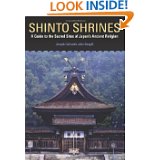
Kami are central to Shinto. Indeed, the very name Shinto means ‘way of the kami’. So an obvious question is what exactly is or are kami?
In Shinto Shrines (University of Hawaii Press), Joseph Cali provides an admirably clear overview of the subject. Well, as co-author I would say that, wouldn’t I… But I do stand in genuine admiration of what Joseph accomplished in the book, particularly in terms of a 50-page Introduction that is as objective and succinct as any account I’ve seen. (The extract below is accompanied by my own photos.)
*******************************************************************************
Broad definition of Shinto
If there is one single, broad definition of Shinto, it would probably be “Shinto is a belief in kami.” Shinto is considered a “natural” as opposed to a revealed religion. It has no founder and no prophets. It has morality tales and myths that have been preserved in writings and influence its practices, but there is no doctrine such as the “Ten Commandments” that dictates the correct way to live as mandated by God. It is a belief system that developed over thousands of years at different locations within Japan, and is centered on local as opposed to universal beliefs.
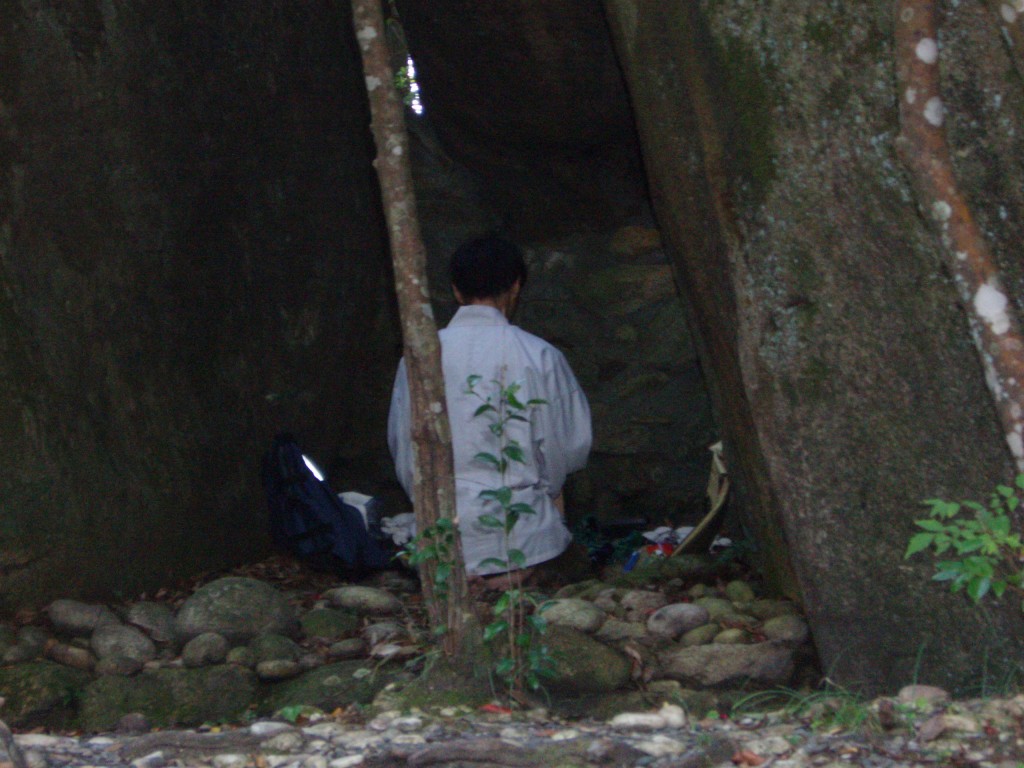
Beliefs and practice can differ according to local custom
Nature is its primary source of inspiration and it has incorporated a number of elements from Buddhism, Confucianism, Daoism, and Chinese divination (called onmyodo in Japanese), and from different parts of Asia. Over the centuries many of the ancient, local beliefs were formalized and nationalized by the ruling and priestly classes. This included giving names to nameless kami and creating shrine buildings. Finally, a radical restructuring and standardization took place between the late nineteenth and mid-twentieth centuries that is reflected in the Shinto we now find in most shrines.
What are kami ?
As mentioned above, Shinto can be defined as a belief in kami, which is usually translated as “god,” “deity,” or “spirit” (Japanese makes no distinction between singular and plural). Kami are not like the God of monotheistic religions or even like the Buddha. Although Shinto in the eighteenth century saw new sects emerge based on the concept of a singular creator divinity, they never held sway. Shinto is not only a polytheistic, but also a pantheistic faith, meaning that kami manifest in everything. It is also considered animistic, because its gods are in the forces and manifestations of nature.
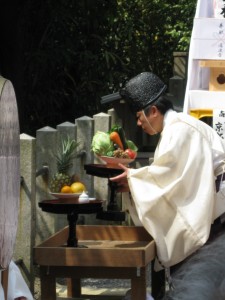
Making offerings to the kami
The kami make themselves “present” in living beings, in the dead, in organic and inorganic matter, and in actions beyond the control of man such as earthquakes, storms, droughts, and plagues. The concept of kami also includes great people who are venerated as kami after they die and who are worshipped by subsequent generations as protectors or ancestor kami. This is somewhat akin to the Christian concept of sainthood—though people enshrined as kami were more often agents of power rather than of good works. There are times too, as in the case of the emperor, where a living person can be venerated as a kami.
Like the gods of Mount Olympus, kami perform both good and bad deeds, causing both bountiful harvests and disasters (though preventing the latter is de-emphasized in modern-day Shinto it was once the prime motivation of kami ritual). To gain the blessings and avoid the destructive actions of kami, offerings and prayers are directed to them on a regular basis. Such offerings traditionally consisted of cloth, food, swords, horses, and other valuable objects. These days offerings by priests are primarily food and drink, or sprigs of the sacred sakaki tree, while those from worshippers are usually monetary.
From the eighth century, kami were given official ranks that could be raised as a reward for good behavior. In this and other ways, kami came to be treated as if human, with similar emotions, needs, and desires. On the other hand, they were rarely portrayed in art in an anthropomorphic way, except under the influence of Buddhism. There is, however, one category of imported kami for whom visual representation is common: the shichifukujin (Seven Lucky Gods).
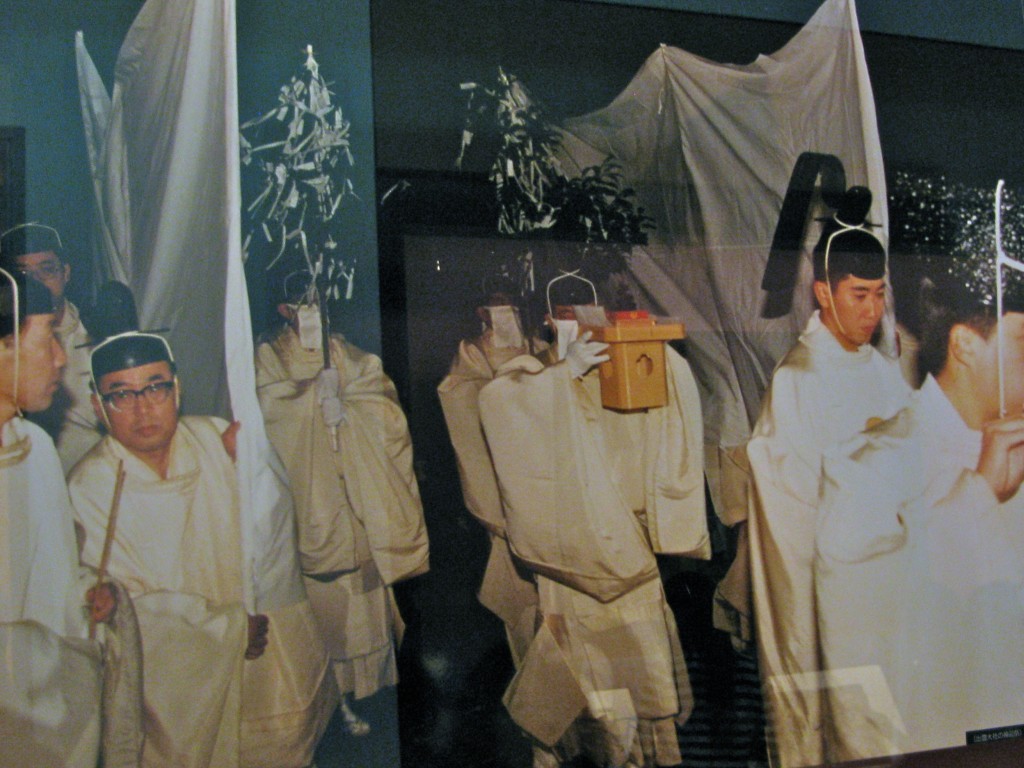
Eight myriad kami being borne on sakaki branches at an Izumo festival held every autumn

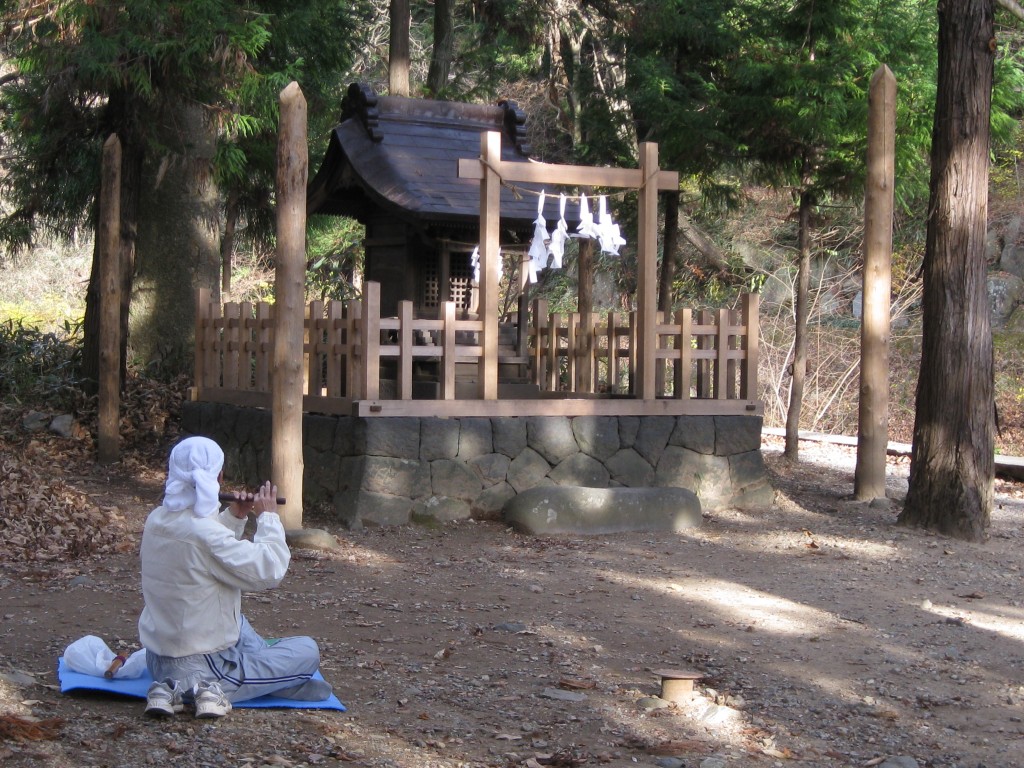
Leave a Reply